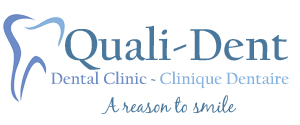Nutrition and Oral Health
Tips for Improving Diet and Oral Health
Good nutrition is essential for good health, and that includes the health of your teeth. Learn more about the link between your diet and your oral health— and what you can do to improve both.
How does diet affect oral health?
Tooth decay and cavities are caused by acid that is produced by interactions between oral bacteria and food deposits left on your teeth. Certain foods—especially sugary, starchy, and sticky snacks—are linked to higher levels of such acidcausing bacteria. Additionally, poor nutrition can weaken your immune system and make you more susceptible to other health problems, including gum disease.
How can I maintain good nutrition?
Variety and moderation are the keys to a healthful diet. Eat well-balanced meals, choosing a variety of options from the five major food groups: fruits, vegetables, grains, dairy products, and protein. Limiting or eliminating one of these groups can lead to vitamin or mineral deficiencies—which can impact your oral health. More information on healthy eating habits is available on the U.S. Department of Agriculture’s Dietary Guidelines website, www.health.gov/ dietaryguidelines.
What vitamins and minerals are important for oral health?
Your teeth and jaws are made mostly of calcium, which helps protect and rebuild your tooth enamel. Not getting enough calcium puts you at risk for gum disease and tooth decay, so make sure to eat calcium-rich foods like beans, greens, milk, yogurt, and cheese. Research has shown that dairy products not only provide calcuim, but also may help reduce your risk of cavities.
Vitamin D (found in milk, eggs, and fish) also is an important nutrient because it helps your body to absorb calcium. A vitamin D deficiency can lead to burning mouth syndrome, a painful condition in which patients feel a scalding sensation in the tongue, lips, palate, or throughout the mouth. To further protect your enamel, seek out foods containing phosphorous (like meat, poultry, fish, milk, and eggs) and vitamin A (like sweet potatoes, liver, and spinach).
Vitamin C (found in oranges, grapefruit, strawberries, kiwi, and red and green peppers) promotes healthy gums and quick healing of wounds. A severe lack of it could result in bleeding gums or loose teeth. Other nutrients that promote oral health include vitamin B3 (found in chicken and fish), vitamins B2 and B12 (found in pasta, bagels, spinach, and almonds), and iron (found in liver, red meat, bran cereal, and nuts).
What foods are bad for oral health?
Sugar fuels the bacteria that produce acid and cause tooth decay, so avoid excessive intake of sugary foods and beverages like candy, desserts, fruit and vegetable juices, and regular soda. Sugar-free diet soda also is bad for your teeth, as all types of soda contain acid that can cause tooth erosion.
Carbohydrates like chips, bread, pasta, or crackers also promote acid-causing bacteria, so they can be just as harmful to your teeth as sugar. When you eat carbohydrates, eat them as part of a meal rather than by themselves, because combinations of foods (like cheese and crackers) can help neutralize acids.
You also should avoid sticky, chewy foods like raisins, granola bars, jelly beans, caramel, honey, and syrup. It’s difficult for saliva to wash away these foods, so they can cling to the teeth and cause decay.
For more information about nutrition and oral health, talk to your general dentist or visit KnowYourTeeth.com.
KnowYourTeeth.com
Brought to you by the Academy of General Dentistry (AGD), this website answers important dental health questions, offers the latest information on current treatments,
provides tips for first-rate oral hygiene, and helps visitors find highly qualified general dentists near where they live.
The AGD is a member of the Partnership for Healthy Mouths, Healthy Lives, a first-of-its-kind national dental coalition composed of 37 leading dental health organizations. Look for more information about the Kids’ Healthy Mouths campaign at www.2min2x.org.
Published with permission by the Academy of General Dentistry.
© Copyright 2014 by the Academy of General Dentistry. All rights reserved.
